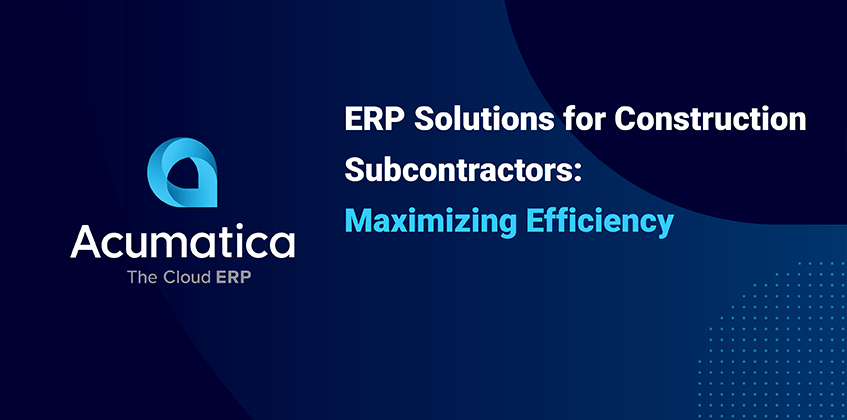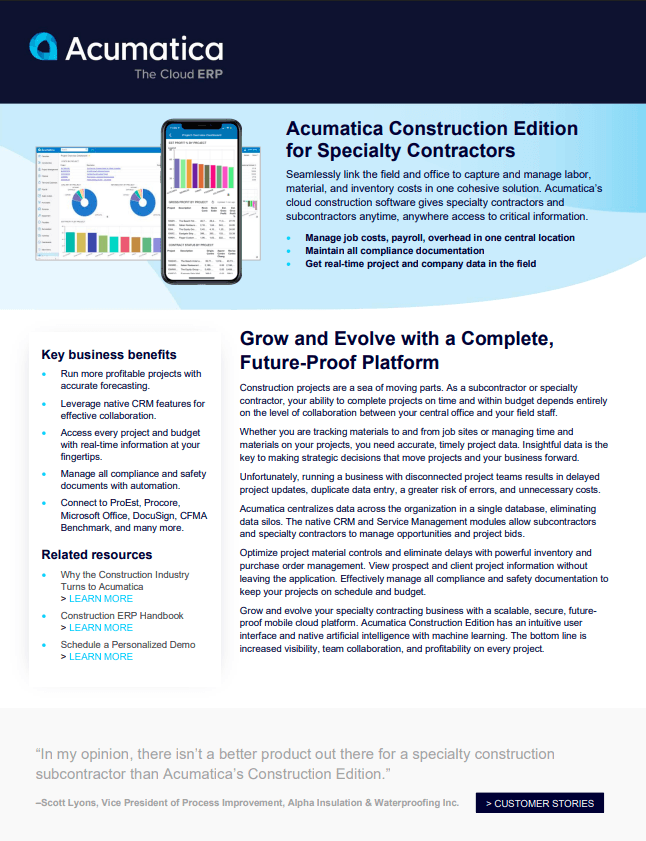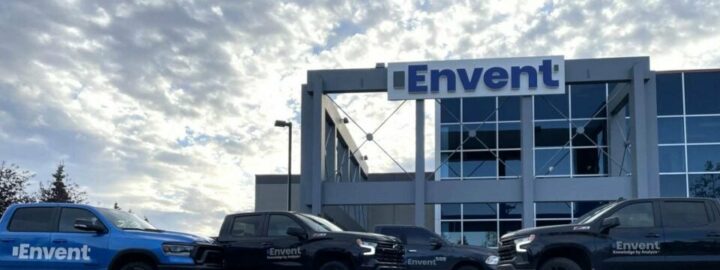
As the construction industry has evolved, so, too, has reliance on subcontractors and specialty contractors. As these firms grow and take on more responsibility, they need more robust, comprehensive technology to manage operations. Business management solutions, particularly ERP systems, are increasingly vital for helping subcontractors manage projects, improve communication, and enhance efficiency.
This article delves into the nuances of construction ERP software, highlighting what it is, what it does, and how to choose the right system.
What is Construction ERP? A Comprehensive Overview
Every construction project is unique, but they all have many things in common, including contracts, budgets, job costing, change orders, billing, field reports, compliance, payroll, and more.
Juggling all this is a challenge for subcontractors who work on multiple projects at once, but it’s especially challenging when they rely on disconnected systems and aging technology that wasn’t designed for the construction industry in the first place. These inadequate solutions produce data silos, limit visibility into project progress and costs, and often require tiresome and error-prone manual workarounds.
So, what is the antidote to inefficient, generic technology? Modern construction ERP software.
Cloud-based ERP solutions for construction give contractors and subcontractors a specialized solution designed to meet their complex project management needs.
These systems are built to integrate with operational and construction-related applications, including financials, job cost accounting, project management, payroll, inventory, order management, CRM, and more. Data from every application is stored in the Enterprise Resource Planning (ERP) solution, giving employees access to real-time, accurate, companywide information anytime, anywhere.
Key Benefits of ERP for Contractors and Subcontractors
One of the great benefits of a construction ERP system is that it harnesses the many moving parts of a subcontractor’s projects. This helps them successfully compete in a highly competitive market with tight margins—empowering subcontractors to:
Manage all project features
from contracts, schedules, and change orders to budgets, job costs, and compliance requirements—in one place.
Capture and manage labor
-
-
-
- Dispatch crews.
- Route trucks.
- Communicate with field technicians in-app.
Effectively allocate resources and control costs
-
- Maintain warranties.
- Manage preventative maintenance contracts.
-
-
Keep everyone on the same page
working with the same data, including integrated field reports, RFIs, submittals, and photo logs.
Eliminate manual data entry and the errors that come with it.
Ultimately, an ERP system for construction helps subcontractors operate efficiently and bring projects in on time and within budget, which translates into satisfied customers and a growing bottom line.

Download Specialty Contractors Data Sheet
How to Choose the Right Construction ERP Solutions
Clearly, subcontractors derive business-enhancing benefits from investing in construction ERP software, but, to access those benefits, they have to pick software that truly fits their operations and processes. That’s why subcontractors—and all construction professionals—must do their due diligence before making an ERP selection.
They’ll want to find a modern construction ERP system that is customizable, scalable, and capable of integrating seamlessly with important third-party applications, while also providing complete bid-to-close-out functionality.
When evaluating construction ERP solutions, contractors should focus on:
-
-
- Robust financial management capabilities
- Job cost accounting and progress billing functions
- Project management features—including real-time field updates
- Flexible payroll functions that support varied compensation structures
- Automated commitment and change order processes
- Streamlined compliance management
- Simplified and automated tax calculations
- Customer Relationship
- Management (CRM) functions
- A flexible mobile app for anytime, anywhere data access
- Advanced materials and change management capabilities
-
In addition to looking for these features, it’s also critical that subcontractors choose the right ERP provider. They’ll be working with this provider for an extended period of time throughout the evaluation, implementation, and go-live processes. So, they need to find a provider that’s dedicated to empowering small and midsized businesses, puts customers first, and delivers an industry-specific, innovative, and adaptable product that solves real-world problems—a provider like Acumatica.
To assess the suitability and trustworthiness of Acumatica, subcontractors can request a thorough product demonstration, read real-user reviews, and chat with other subcontractors who are customers—like Scott Lyons, VP of Process Improvement at Installed Building Products, Inc.
Cloud-Based ERP for Subcontractors: Acumatica Case Study
Alpha Insulation & Waterproofing specializes in commercial insulation, waterproofing, fireproofing, and fire stopping—operating nine branches in five different states. Prior to Acumatica, the company ran on a construction-based project management and financial system that repeatedly crashed, was not used by field team members, was not SOX compliant, and required users to manually make work-in-progress (WIP) and percentage of completion calculations. This wasn’t working, so Lyons and Alpha’s CFO, Cassandra Moore, worked together to determine what a new system would need to provide for the business to get back on track.
“We came up with a comprehensive list of requirements and then carefully evaluated each potential application to identify the best possible fit for our business,” Moore says.
After looking at multiple ERP providers, one rose to the top: Acumatica. Says Lyons, “Acumatica has the most robust product roadmap, the most thorough understanding of the construction industry, and the best overall user experience.”
Now that the entire organization is running on Acumatica, the company has logged some impressive benefits, including:
-
-
- Complete visibility into all aspects of the business.
- Easy access to accurate, up-to-date, timely data.
- Faster WIP calculations—done in minutes instead of a day and a half.
- Custom reports for important financial metrics.
- The ability to act and react quickly in the field.
- Automated processes that save time.
- Continued organic and acquisition growth into new markets.
-
“The fact that Acumatica can update job costing with weighted cost average is phenomenal,” Lyons says. “The fact that it came from a distribution company background and had that in its toolbox so that it communicates with inventory and feeds into job costing, and that it can sum up jobs to a WIP schedule regularly, which, for me, means it’s one of the best platforms out there.”
Conclusion and Future Outlook
Subcontractors who implement industry-specific software enjoy business-wide visibility and employ robust analytical capabilities that boost data-driven decision-making. Subcontractor software—with its automated administrative tasks and streamlined operations—delivers exceptional efficiencies that are impossible with aging technologies and paper-based processes.
According to Deloitte’s Michelle Meisels, success for construction companies lies in adopting such modern, connected technology: “To lay a strong foundation for a successful future and deliver desired outcomes, E&C [engineering and construction] firms should focus on having a holistic technology convergence approach that connects, integrates, and automates construction sites with the entire value chain on a secure, intelligent infrastructure.”
Acumatica Construction Edition is a connected, integrated, automated solution resting on a secure, intelligent platform. This—combined with Acumatica’s commitment to providing a collaborative partner and customer ecosystem, to ensuring comprehensive data ownership and control, and to taking a customer-centric approach to product development—makes Acumatica the smart choice for subcontractors around the globe.
Says Lyons, “In my opinion, there isn’t a better product out there for a specialty construction subcontractor than Acumatica’s Construction Edition.
 Canada (English)
Canada (English)
 Columbia
Columbia
 Caribbean and Puerto Rico
Caribbean and Puerto Rico
 Ecuador
Ecuador
 India
India
 Indonesia
Indonesia
 Ireland
Ireland
 Malasya
Malasya
 Mexico
Mexico
 Panama
Panama
 Peru
Peru
 Philippines
Philippines
 Singapore
Singapore
 South Africa
South Africa
 Sri-Lanka
Sri-Lanka
 Thailand
Thailand
 United Kingdom
United Kingdom
 United States
United States













